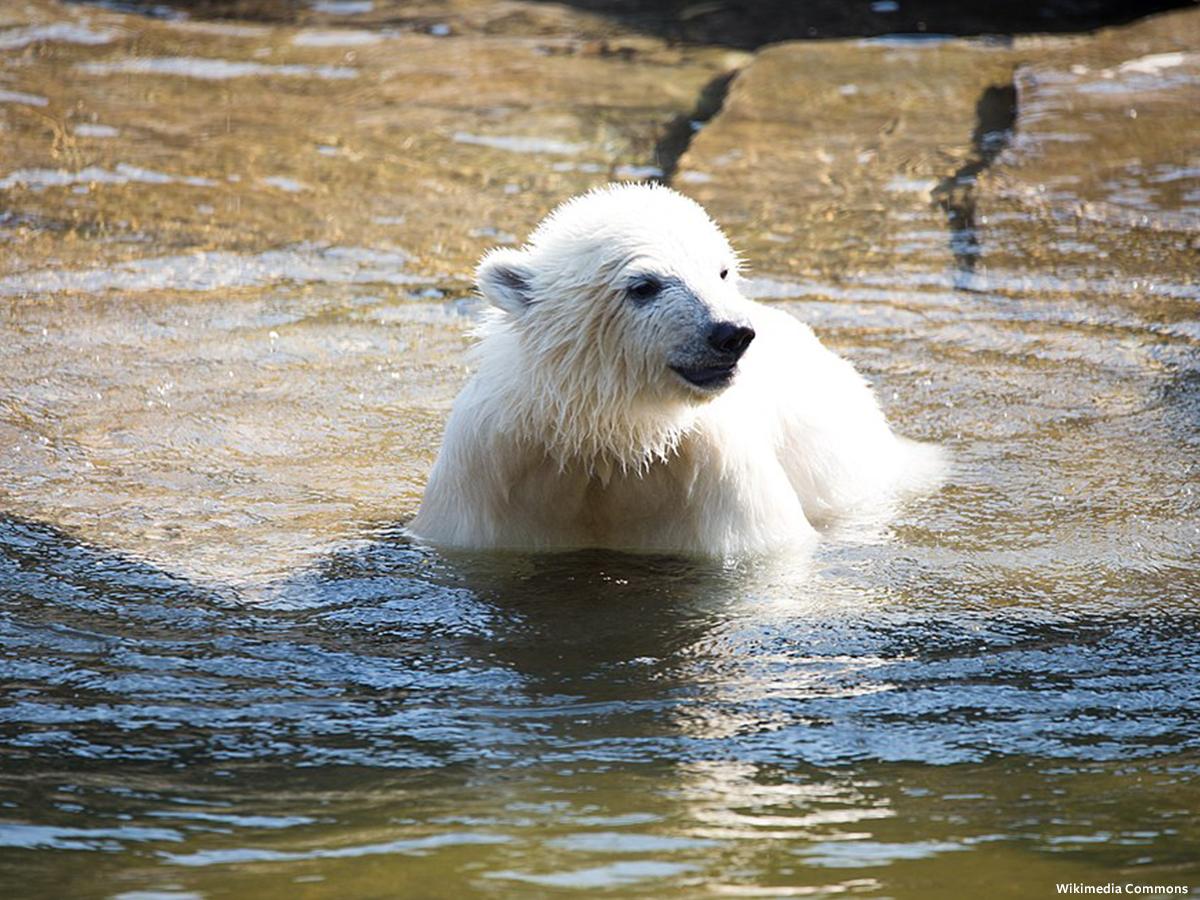Inbred Polar Bear Cub at Berlin Zoo Highlights Serious Problem With Captive Breeding Programs
News that a beloved polar bear cub at the Tierpark Berlin zoo in Germany is the product of inbreeding has caused quite a stir. Sadly, it also highlights more problems with captivity and one of many serious issues with captive breeding programs.
For the most part, and certainly in the West, we humans value personal autonomy when it comes to sexual reproduction. Individuals are allowed to choose their own mate. We don't force them to reproduce with people they don't know or don't like, and we certainly don't forcibly impregnate them without their permission.
Is it too much to ask that we extend this minimal amount of respect to the animals we keep captive against their will? Apparently so, when it comes to captive-breeding programs, in which humans control the mating behavior and reproduction of individuals based on data found on spreadsheets. It’s a terrible injustice that we perpetrate on animals, dictating who, when, and how they reproduce. But it’s also a recipe for disaster, as was vividly illustrated recently when news broke of a “clerical error” that led to the inbreeding of captive polar bears.
Hertha is a beloved young polar bear at the Tierpark Berlin zoo who was born in 2018. The news that she is the product of an accidental breeding between siblings has shocked the city and the wider world.
Hertha’s parents, Tonja and Wolodja, were siblings born in Moscow. But a clerical error meant that Tonja was assigned the documents of another female polar bear, which gave the impression Tonja and Wolodja were not related. Wolodja and Tonja were both later transferred to the Tierpark Berlin zoo.
Disturbingly, this is also the second time this has happened. In 2016, Tonja gave birth to two cubs with Wolodja, including an unnamed female who died in Berlin shortly after being born from pneumonia, and Fritz, a male who died in Berlin at just four months old from multiple organ failure attributed to liver damage. A third cub died after just 26 days in 2018.
Inbreeding can have severe consequences for both individuals and species. On a species level, inbreeding reduces genetic diversity. This is an especially serious problem in vulnerable species like polar bears. On an individual level, inbreeding results in a wide variety of health defects, including genetic disorders, higher offspring mortality, loss of immune function and increased cardiovascular risk, among other issues.
Unfortunately, these polar bears are part of the European Endangered Species Program, which is much like the Species Survival Plan for member zoos of the Association of Zoos and Aquariums in the U.S. Most of the animals bred through these programs exist for no other reason than so that there can be a captive population. They will never be released into the wild.
They’ll also never be able to decide anything about their lives, let alone with whom they mate. Instead, they’ll be forced into situations with potentially incompatible animals or taken away from those they’ve bonded with as part of breeding and loan agreements, and many will be subjected to highly invasive artificial insemination procedures.
Hopefully, Hertha’s story will help raise awareness about how zoos really work, and encourage more people not to support them.
To learn more about how zoos mistreat and harm animals, check out our most recent 10 Worst Zoos for Elephants list.


